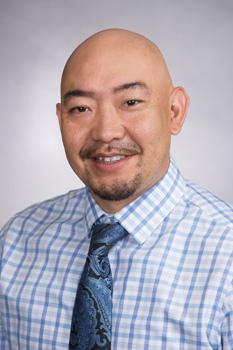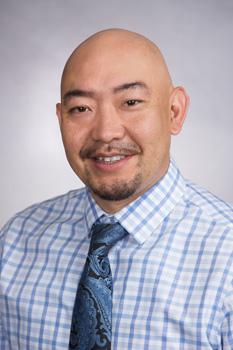
Credit: UC San Diego Health
Rising drug prices have gotten a lot of attention lately, but the actual cost of prescription medications is more than just the dollars and cents on the bill. Researchers at Skaggs School of Pharmacy and Pharmaceutical Sciences at University of California San Diego estimate that illness and death resulting from non-optimized medication therapy costs $528.4 billion annually, equivalent to 16 percent of total U.S. health care expenditures in 2016.
The analysis is published in the March 26 online issue of the Annals of Pharmacotherapy.
"Ideally, when you're sick, a health care professional prescribes you a medication, you take it as directed and you get better," said Jonathan Watanabe, PharmD, PhD, associate professor of clinical pharmacy in the Skaggs School of Pharmacy. "But what happens a lot of the time is the medication regimen is not optimized. In other words, the prescription may not be exactly appropriate for your indication — not quite the right medication or dose — or you just don't take the medication for whatever reason, don't take them as directed, or the medication causes an adverse event or a new health problem."
Watanabe led the study with Jan Hirsch, PhD, professor of clinical pharmacy and chair of the Division of Clinical Pharmacy at Skaggs School of Pharmacy, and Terry McInnis, MD, of Laboratory Corporation of America and the Get the Medications Right Institute.
Here's an example of non-optimized medication therapy: You come down with the flu and visit the local hospital's emergency department. A doctor prescribes Tamiflu, but you don't fill the prescription. It's too expensive or you don't have time or energy. Your symptoms worsen and you end up back at the hospital, and eventually in the Intensive Care Unit (ICU) — all at great cost to yourself as the patient, as well as to the hospital and insurance company.
But the problem isn't just nonadherence (not taking the medication at all, or not taking it as directed), Watanabe said. Non-optimized medication therapy also includes instances in which a medication contributes to a new health problem. For example, the ACE inhibitor you're taking to lower your blood pressure causes you to cough, so you take an over-the-counter cough-and-cold medicine that also includes an ingredient that increases blood pressure and raises the risk of sleepiness and falls.
"In that case, the drug treatment is functioning like a new disease," Hirsch said.
For this study, Watanabe, Hirsch and McInnis created decision analytic models of the many health outcomes that could ensue due to a treatment failure or new treatment-caused medical problem, including emergency department visits, hospitalization, long-term care, medical appointments and additional medications. The data came from a variety of validated sources, including the federal government and the National Nursing Home Survey.
The researchers considered the current cost of each possible consequence and estimated the total annual cost of illnesses and deaths that result from non-optimized medication therapy to be $528.4 billion, with a plausible range of $495.3 billion to $672.7 billion. They estimated that the average cost of an individual experiencing treatment failure, a new medical problem or both after initial prescription use to be approximately $2,500. The estimates did not include non-medical costs such as transportation or caregiving or indirect costs related to lost productivity.
This is the first time these data have been updated since 2008, when it was last estimated to cost $290 billion annually, or about 13 percent of U.S. health care spending at that time. Watanabe said a lot has happened since.
"We've experienced increased medical costs and we now have the Affordable Care Act, which gave 20 million more people access to prescription drugs and, as a result, more chances for nonadherence and medication-related health issues.
"Our study also clarifies that the cost of $528.4 billion is due to much more than simply nonadherence, which has been a misinterpretation of prior estimates, but also includes any situation when the medication regimen is not optimized to correctly and safely treat something treatable."
While the estimate is the best researchers can make based upon available data, they acknowledge uncertainty in the probabilities of the predicted outcomes. Watanabe said better coding and tracking systems, now being rolled out in many health systems, will improve monitoring of medical outcomes related to medication therapy — and help prevent problems.
"Non-optimized medication therapy is a massive avoidable cost. If medications were prescribed, monitored and taken properly, we wouldn't face this cost, and patients would be healthier," he said.
To improve outcomes and lower costs, Watanabe and team propose expanding the presence of direct patient care models by clinical pharmacists in collaboration with prescribing clinicians, a process known as comprehensive medication management.
There are many evolving models of pharmacists providing enhanced medication management services. Across the U.S., pharmacists review medications as part of the federal Medicare-mandated Medication Therapy Management program. Pharmacists in some states, including California, also have provider status, meaning they can initiate, change or end a patient's prescription in a collaborative agreement with prescribers. In other models, pharmacists work with prescribers and other members of a patient's health care team to review medications and recommend medication regimen changes under a prescriber's supervision.
To improve medication-related care, Watanabe and co-authors wrote that they would like to see a systematic and coordinated effort to break down prescriber-pharmacist silos and expand comprehensive medication management programs, in which clinical pharmacists have access to complete medical records, improved dialogue with other members of a patient's health care team and input as a medication is prescribed — similar to what is now taking place at many U.S. Veterans Affairs clinics.
Meanwhile, their study findings are already being used to support several national initiatives to improve medication management.
"Pharmacists and pharmacies are the most readily available health care access point for most people, and their role will likely expand as the health care landscape shifts to emphasize more community-based and ambulatory care," Watanabe said. "Simply put, pharmacists can help optimize medication regiments to produce the best outcomes at the lowest cost."
###
Media Contact
Heather Buschman, PhD
[email protected]
858-249-0456
@UCSanDiego
http://www.ucsd.edu
Related Journal Article
http://dx.doi.org/10.1177/1060028018765159





